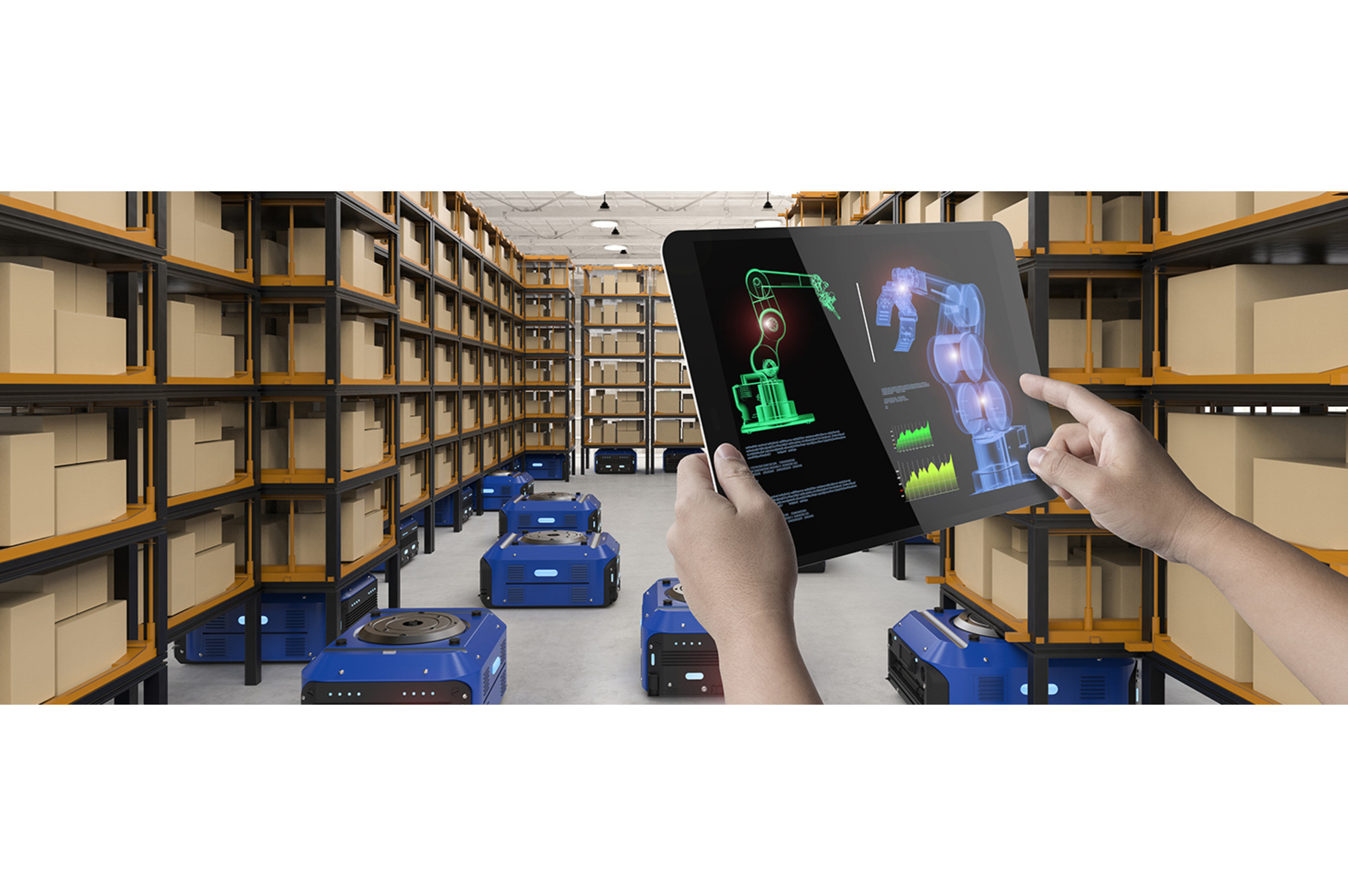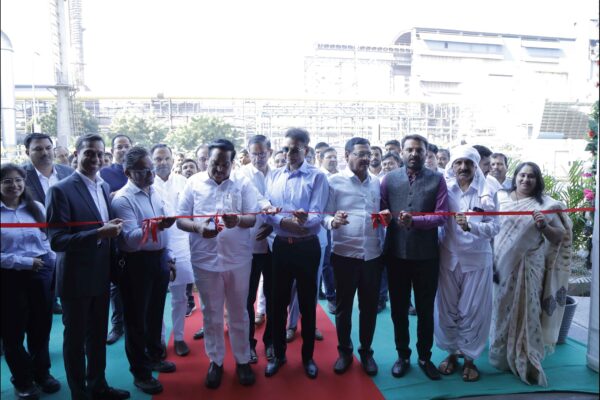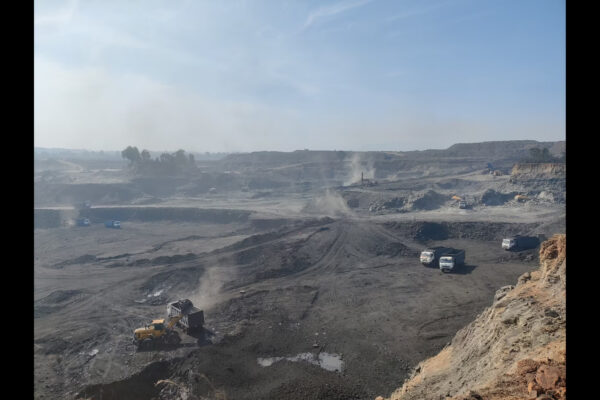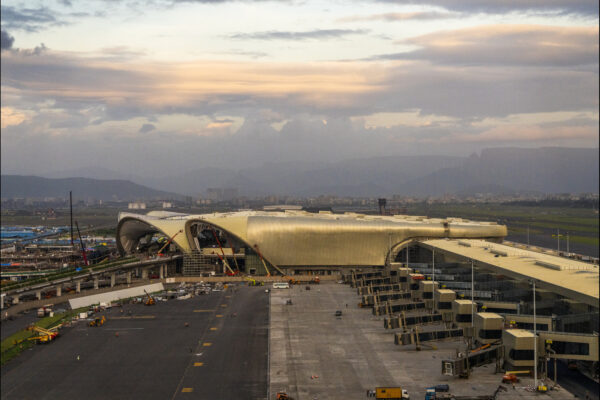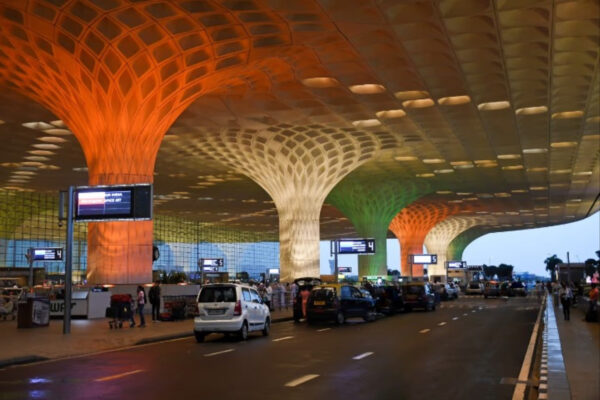Warehousing: Digital push fuels growth
The warehousing sector is undergoing a significant transformation, fueled by a digital push, the rapid growth of e-commerce, and increased manufacturing activity. As businesses seek more efficient and tailored solutions, the demand for Grade A and built-to-suit warehouses is on the rise. This article delves into how digitalization, built-to-suit solutions, and sustainability are driving the sector’s growth
In recent years, the Indian warehousing industry has taken a giant leap forward, transforming from a fragmented and largely unorganised sector into one of the fastest-growing pillars of the country’s logistics and supply chain ecosystem. Prior to the implementation of the Goods and Services Tax (GST) in 2017, warehousing in India was a neglected and underdeveloped space, dominated by small, scattered godowns with minimal mechanization and outdated infrastructure. These facilities primarily served local or regional needs and lacked any real integration into national supply chains. The turning point came with the introduction of GST, which dismantled state-level tax barriers and enabled companies to reconfigure their supply chains based on operational efficiency rather than tax considerations. This reform laid the foundation for the development of larger, more centralized, and strategically located warehouses.
However, the sector truly witnessed an unprecedented surge during the Covid-19 pandemic. As lockdowns and mobility restrictions took hold, a massive shift toward online shopping reshaped consumer behavior, accelerating the rise of a ‘click-and-buy’ culture across urban and semi-urban India. E-commerce platforms, FMCG companies, and pharmaceutical firms faced an urgent need for robust warehousing and last-mile delivery infrastructure to keep up with soaring demand. This sudden spike in demand catalyzed a wave of investments into the warehousing space. Institutional investors, private equity firms, and global logistics players poured capital into building modern, tech-enabled warehousing parks. What was once a neglected part of the logistics chain quickly evolved into a hotbed of innovation, attracting attention for its role in ensuring business continuity and supply chain resilience.
Growing Market
Today, India’s warehousing sector stands at the cusp of a new era — defined by digitization, automation, sustainability, and integration with national infrastructure projects. From cold storage facilities and fulfillment centers to multi-modal logistics parks, warehousing is no longer just about storage — it’s about speed, efficiency, and strategic advantage. According to a report by IMARC The Indian warehouse market size was valued at INR 1,505.06 billion in 2024 and it is estimated the market to reach INR 3,314.06 billion by 2033, exhibiting a CAGR of 8.71% from 2025-2033. “The warehousing sector in India is growing at a remarkable pace. A lot of this momentum is being driven by the surge in e-commerce, the expansion of 3PL players, stronger manufacturing activity, and policy initiatives like Gati Shakti and the National Logistics Policy. Today, clients are looking for much more than just storage space. They expect Grade A infrastructure, technology integration, sustainability features, and strategic locations that bring them closer to key consumption markets,” says Yash Sharma, Executive Director, CCI Group. However, compared to more mature markets such as the United States, India’s warehousing sector is still in its early stages of development and holds immense potential for growth and modernization. “India’s warehousing sector is still very much in its early growth phase especially when you compare it to more mature markets like the US. Despite having a similar population, our warehousing supply is still significantly lower (almost 15 times less). But that’s changing fast. Rising consumption, the e-commerce boom, and global trends like the China+1 strategy are really pushing demand through the roof. What we’re seeing now is a clear move toward consolidation. Businesses are actively shifting away from fragmented, non-compliant setups and looking for high-quality, Grade A spaces that can support scale, compliance, and operational efficiency,” says Tapan Bhatt, COO, Ascendas Firstspace.
The rise of Grade A warehouses
With growing concerns over environmental degradation, there is an increasing emphasis on sustainable development across sectors — and warehousing is no exception. The government is actively promoting green logistics infrastructure as part of its broader commitment to climate goals and sustainable growth. In alignment with these efforts, developers and occupiers are increasingly opting for Grade A warehouses that incorporate eco-friendly designs, energy-efficient systems, and environmentally responsible practices. After the pandemic, the demand for Grade A warehouse space has surged, fueled by the growth of e-commerce, quick commerce, increased manufacturing activity, and a rising need from third-party logistics providers. This surge has helped maintain healthy occupancy levels above 85%. Additionally, the Union Budget for 2026 has provided support for air cargo warehousing, aiming to enhance cargo efficiency, reduce delays, lower costs, and minimize spoilage of perishable goods. Grade A warehouses are purpose-built, professionally managed facilities that adhere to global standards in construction, safety, and operations. These modern structures offer features like higher floor load capacity, wider column spacing, greater vertical clearance, and multiple loading bays for faster handling.
This shift is being driven by the evolving needs of industries such as e-commerce, retail, manufacturing, and third-party logistics (3PL) providers, all of which require more efficient, scalable, and compliant storage solutions. As companies look to streamline their supply chains and reduce turnaround times, the demand for high-quality warehousing infrastructure has surged. “Clients are increasingly seeking Grade A facilities that offer sustainability features and technological integration. The demand for such high-quality spaces is projected to rise, with Grade A stock expected to increase from 290 million sq ft in 2023 to 400 million sq ft by 2027. This evolution underscores the sector’s alignment with global standards and the growing emphasis on efficiency and environmental responsibility,” says Ajay Gupta, Managing Director, Indian Extraction.
Next-Gen Warehousing
As demand surges, India’s warehousing footprint is expanding well beyond the traditional metros. A key trend driving this evolution is the sector’s expansion into Tier II and Tier III cities. “Tier 2 and 3 cities are emerging as key growth areas, contributing around 18.7% to the total warehousing stock, reflecting a shift towards decentralized distribution networks. We are starting with our first logistics park in Lucknow. Recognizing the evolving market dynamics, we target to expand into Tier II and III cities, which have shown a significant uptick in warehousing demand,” says Ajay Gupta. With rising consumption patterns in smaller urban centers, increased internet penetration, and improved infrastructure, these regions are emerging as critical nodes in the country’s logistics network. Businesses are increasingly establishing fulfillment centers and distribution hubs closer to end consumers in these cities, aiming to reduce delivery timelines, cut logistics costs, and enhance last-mile efficiency. “We’re actively exploring opportunities in emerging Tier 2 and Tier 3 cities such as Lucknow, Coimbatore, Dahej, and Dahanu. These markets are becoming increasingly important, driven by growing regional consumption, port-led development, and a broader push toward industrial diversification. We see a lot of potential in these locations as the next phase of logistics growth in India takes shape,” says Yash Sharma.
Among the next-gen waves taking place in the warehousing sector is the demand for built-to-suit (BTS) warehouses. Compared to conventional ready-to-move spaces with standardized layouts, BTS facilities provide the flexibility to include specialized features such as high-bay racking, automation systems, temperature-controlled environments, and reinforced flooring for heavy machinery, all designed to meet the specific demands of each business. “We’re definitely seeing a shift in the way clients are thinking about their warehousing needs. While ready-to-move spaces still dominate the market, there’s growing interest in built-to-suit solutions – especially from clients who are planning ahead and looking for more customized, automation-ready facilities,” says Tapan Bhatt. This trend is especially prominent among e-commerce companies, third-party logistics (3PL) providers, and quick commerce players who require specialized setups to manage diverse SKU portfolios, high-velocity order fulfillment, and tech-enabled workflows. “As businesses manage more complex and diverse SKU portfolios, standard ready-to-use spaces often fall short of meeting their specific operational requirements. We address this challenge through full-stack, modular solutions that are designed to support high-velocity SKU management, incorporate temperature-controlled zones, and include sortation and compliance-specific infrastructure. For us, built-to-suit is about delivering a future-ready operational ecosystem that is tailored to both the current and evolving needs of our clients,” says Dr Ashvini Jakhar, Founder and CEO, Prozo.
With government initiatives and stringent environmental regulations gaining momentum, sustainability has become a central focus in India’s warehousing and logistics sector. In addition to robust fire safety measures and 24/7 security, the warehouse developers incorporate sustainable practices such as solar panels, LED lighting, rainwater harvesting, and green building certifications. “Sustainability isn’t just a checkbox for us, it’s deeply embedded in how we design, build, and operate our parks. All of our facilities are platinum-rated green buildings, and we’ve been very intentional about the features we incorporate. From solar energy powering common areas to rainwater harvesting systems and energy-efficient construction methods, we make sure every detail supports our ESG commitments. We also offer rooftop solar solutions when clients need them, about being flexible and future-ready,” says Tapan Bhatt.
Policy bottlenecks and operational headwinds
The National Logistics Policy and the Gati Shakti initiative have undoubtedly laid a strong foundation for India’s warehousing sector, accelerating multimodal connectivity and unlocking infrastructure investments across the country. However, the journey toward streamlined and scalable warehousing is still hindered by several persistent challenges. Land acquisition remains a key bottleneck, with fragmented ownership patterns, zoning restrictions, and legal ambiguities – often stemming from inheritance disputes – delaying project timelines and increasing costs. “Like any fast-growing sector, warehousing in India comes with its own set of challenges. One of the big ones is land aggregation. It’s not always easy to piece together large, contiguous parcels because of fragmented ownership,” says Tapan Bhatt.
The absence of a single-window clearance system adds further complexity, as developers must navigate multiple regulatory approvals, which vary widely across states. Rising land prices, especially around major urban clusters and logistics corridors, compound these issues and make horizontal expansion increasingly difficult. “Key among these challenges are land acquisition complexities, regulatory hurdles, and the need for skilled labour. Land acquisition remains a significant bottleneck due to fragmented ownership and zoning regulations, leading to project delays and increased costs,” says Ajay Gupta.
Operationally, the industry faces a shortage of skilled manpower trained in modern warehouse management and automation systems. At the same time, the lack of uniform benchmarks for compliance, safety, and storage standards results in inefficiencies and limits scalability. While sectors like e-commerce, FMCG, electronics, and third-party logistics are driving demand for high-quality, tech-enabled warehousing, the sector needs cohesive regulatory support and targeted policy reforms to realize its full potential. Creating a dedicated logistics department under the central government, expediting environmental clearances, and enforcing standard norms across states would help bridge the gap between demand and infrastructure readiness.
Performance Index: Occupancy and Absorption
The recently release report by Knight Frank India highlighted a strong performance in warehousing leasing across the top eight markets (Mumbai, Pune, Chennai, NCR, Bengaluru, Hyderabad, Ahmedabad, Kolkata) during Q1 2025. Total leasing activity stood at 16.7 million square feet (mn sq ft), marking a significant 50 percent year-on-year (YoY) increase. This growth was primarily driven by the manufacturing sector, which recorded a remarkable 94 percent YoY surge in leasing volumes, reaching 8 mn sq ft in the first quarter of the calendar year. Manufacturing companies accounted for 48 percent of total warehousing demand, underscoring the sector’s continued momentum and long-term investment outlook. E-commerce players also registered a notable resurgence, with a 151 percent YoY increase in space uptake – albeit from a lower base – indicating renewed expansion activity. While Third-Party Logistics (3PL) players saw a 12% YoY increase in leasing volumes, their overall share declined to 23%, reflecting a shift in sectoral dynamics. The warehousing market now reflects a broad-based recovery, with improving sentiment and growing confidence across diverse industry segments. Mumbai led with 27 percent of total transacted volumes at 4.4 mn sq ft, followed by Pune, Chennai, and NCR, each contributing approximately 16–17 percent of the same. The manufacturing sector was the primary driver in Pune and Chennai while 3PL companies spurred market volumes in the NCR. The Chennai and Hyderabad markets saw the most volume growth at 154 percent and 137 percent YoY respectively.
According to a report by Colliers, with 9 million sq ft of leasing in Q1 2025 at a 15% YoY growth, industrial & warehousing demand across the top eight cities remained robust. Delhi NCR and Chennai led the demand, cumulatively accounting for around 57 percent of the overall leasing in Q1 2025. The demand for Grade A industrial & warehousing space was particularly impressive in Delhi NCR; the city has already witnessed about half of the leasing activity of 2024 in the first quarter of 2025 alone. Interestingly, across the top eight cities, engineering sector drove demand this quarter, contributing to about 25% of the overall industrial & warehousing space uptake, followed by e-commerce with 21% share. Both these sectors have surpassed the demand from Third Party Logistics (3PL) players, the usual frontrunner. While Chennai and Bengaluru saw strong traction from occupiers in the engineering space, demand from e-commerce players remained significant in Delhi NCR and Mumbai. At a micro market level, Bhiwandi in Mumbai led leasing activity in the first quarter with about 1.0 million sq ft of demand, followed by Luhari (0.9 mn sq ft) in Delhi NCR and NH-16 (0.7 mn sq ft) in Chennai. These three micro markets accounted for significant leasing share in their respective cities during the quarter.
During Q1 2025, large deals (>200,000 sq ft) accounted for 48% of the demand at 4.3 million sq ft. These larger deals were driven by e-commerce companies, followed by engineering and automobile firms. At the city level, Delhi NCR (1.9 mn sq ft) followed by Chennai (1.0 mn sq ft) dominated the proportion of large-sized deals. The report further stated engineering and e-commerce players drove the bulk of leasing during the quarter, together accounting for about 46 percent of the demand. With about 2.2 million sq ft of leasing, engineering firms alone accounted for about one-fourth of the Grade A industrial & warehousing demand in Q1 2025. The sector saw over 2X times growth in leasing activity on an annual basis, led by robust demand in Chennai and Bengaluru. E-commerce also saw close to 2 million sq ft of leasing, led by Delhi NCR and Mumbai.
Growth trajectory continues
India’s warehousing sector has witnessed exceptional growth and continues on a strong upward trajectory. The widespread adoption of e-commerce has firmly taken root, fueling the development of warehousing infrastructure not only in tier I and II cities but increasingly in tier III and IV cities as well. The sector is closely aligned with the growth of e-commerce and manufacturing, which are expected to be major drivers of future expansion. Tier III and IV cities are fast emerging as critical warehousing hubs, while the integration of advanced technologies such as Artificial Intelligence (AI) and Machine Learning (ML) is enhancing operational efficiency across the logistics chain. Government initiatives like the ‘Make in India’ campaign and the ‘China Plus One’ strategy, coupled with upcoming large-scale infrastructure projects, are set to strengthen domestic manufacturing, further accelerating the demand for warehousing facilities.
Looking ahead, the third-party logistics (3PL) segment is expected to record a significant rise in occupancy, propelled by the sustained momentum of the e-commerce sector. Simultaneously, the manufacturing industry is poised for substantial growth, which will further boost the need for warehousing solutions across the country.
Tags

